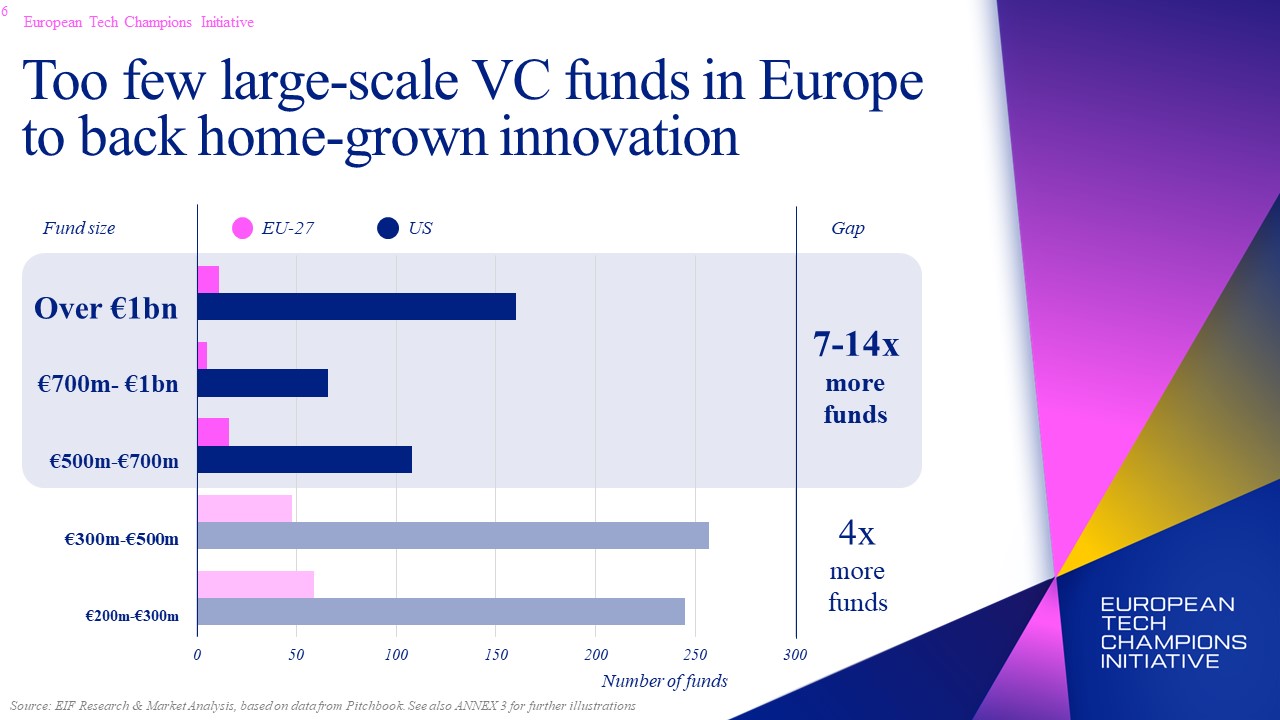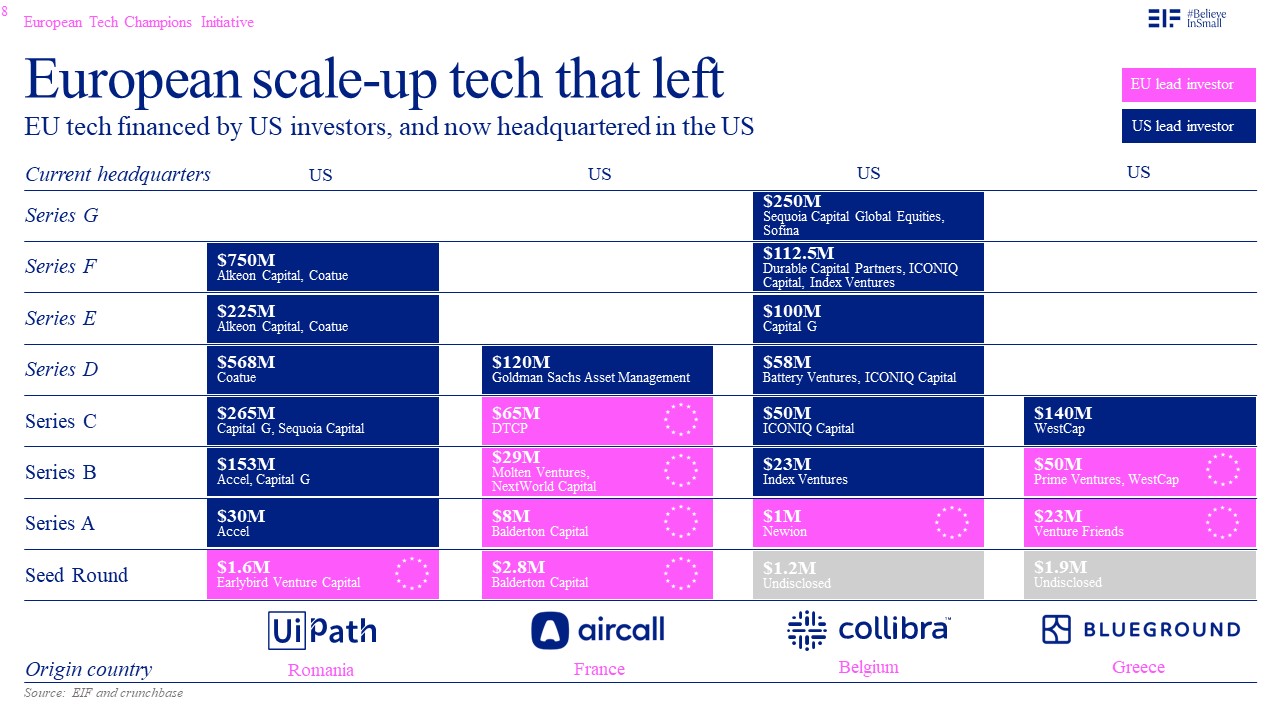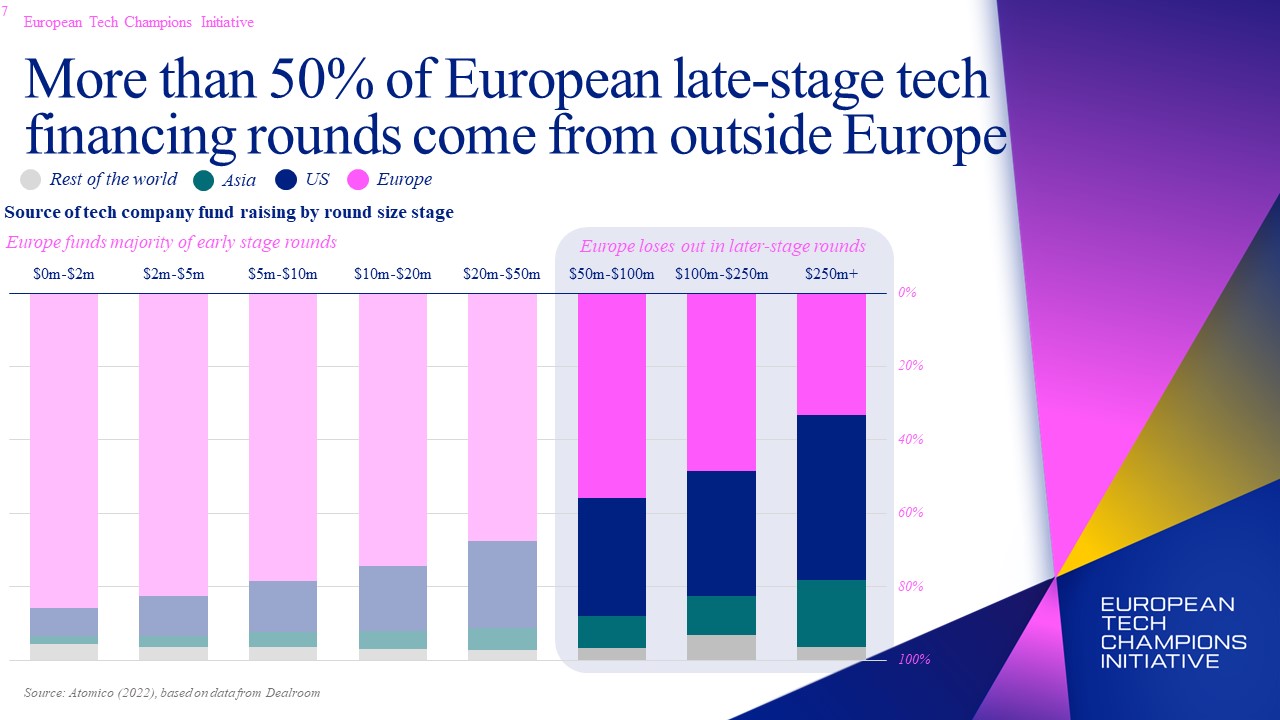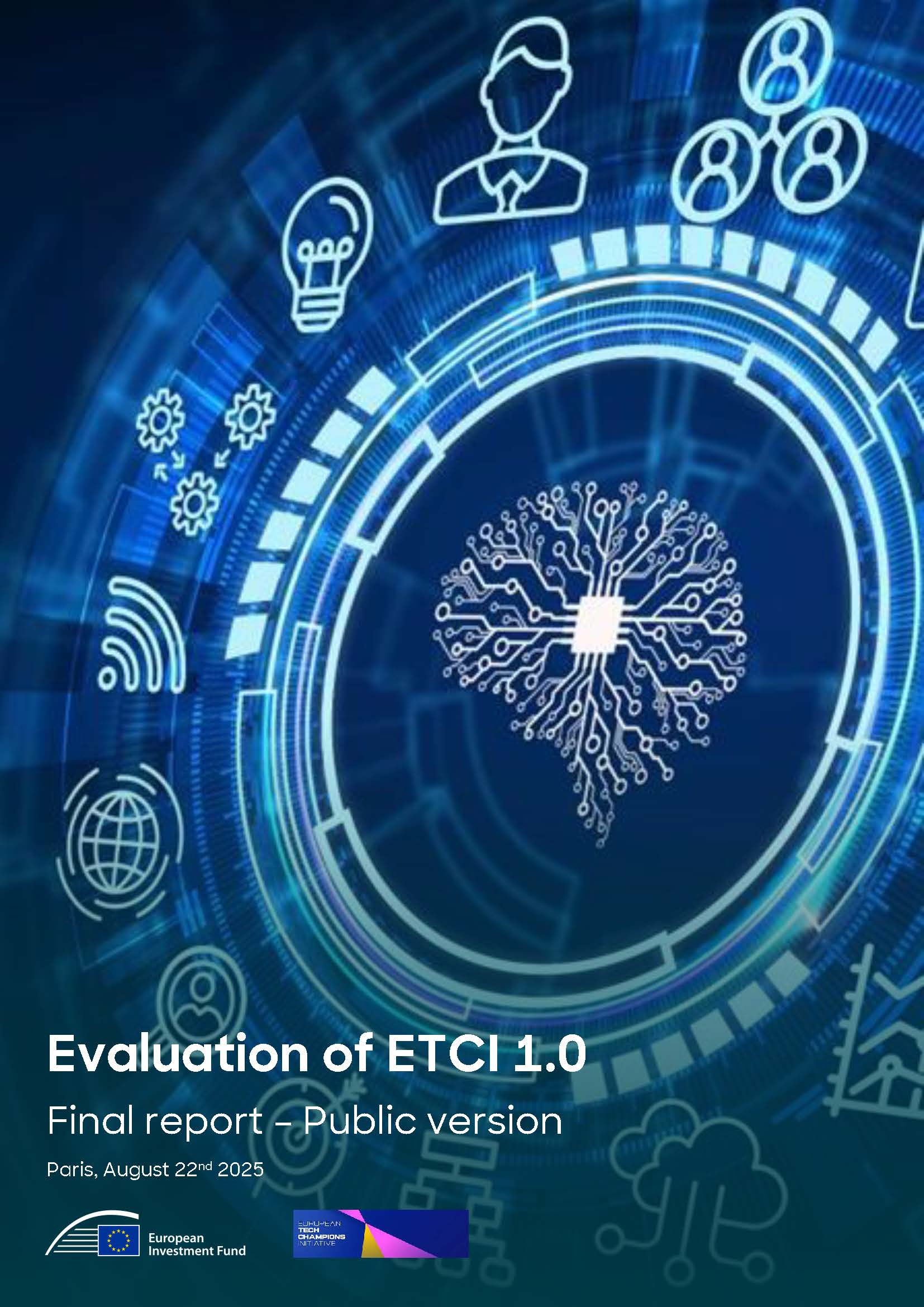Scale-up financing gap
- Date: 12 September 2023
Find more about: Evaluation of ETCI 1.0 – Initial report

Many great ideas have turned into solid businesses – even unicorns – out of the European venture capital scene. WeTransfer, Transferwise (Wise), Skyscanner, Klarna, Skype to name just a few.
And while making that transition to the market is a challenge, and many ‘perish along the way’, there is a second, perhaps even greater challenge, a second valley of death: the scale-up gap.
Once a company is established and time comes to scale, financing needs increase significantly. Internationalising, going global, scaling up the company to the next level requires financial backing at another level too. Consequently, the size of the VC funds that will generate the large tickets that will fuel these growth plans also needs to also be significantly larger.
The European market for scale-up financing, however, remains underdeveloped compared to other developed economies, most notably the United States. The volume of scale-up investments has been consistently higher in the US than in the EU over the last decade. In 2023 (year to date, as of mid-September 2023), scale-up investments stood at €108bn in the US but just €25bn in the EU, according to PitchBook data.

The data is overwhelming: There are, quite simply, at least 7x more large-size (>€600m) VC funds in the US than in Europe. At the level of investee companies, the average VC-backed company in the US receives 5x more backing than its European peers. And looking at the financing in terms of the stage of development, we see that in the US about 2/3 of all VC goes to scale-ups, compared with less than half in Europe. [Duruflé et al. (2017)]
When European companies seek substantial support to scale up and cannot find a partner in Europe, it’s hardly surprising that they turn elsewhere, and what we are seeing is a very large number of European companies being bought up by non-European investors, often even re-locating outside of Europe.
From the EIF’s own portfolio, during the period 2003 to 2015, around 44% of the companies supported by EIF-backed VC funds which were sold were acquired by non-European buyers, in particular from the US.
As Uli Grabenwarter, head of Equity Investments at the EIF, explains, “That has led to a technology drain, a brain drain from Europe…and that cannot be a situation that Europe, as an economic space, is satisfied with.”

In recent years, several large US private equity and venture capital players have been building teams in Europe to look for regional opportunities, with the intention to fill the scale-up gap on the European market.
This interest from foreign investors in the European markets is both an indication of the problem we face here in Europe, but at the same time a confirmation that there are very attractive investment opportunities on European soil – and European cyberspace if we are to be true to the digital transition.
It is indicative that US pension funds hold an impressive €4.7bn stake in German startups, whereas German retirees benefit from a modest €94m share.
So, the potential is there. What is needed is more capital, greater firepower within the European venture capital ecosystem, to fill this scale-up gap and make sure that great European ideas can be born in Europe, grow and flourish in Europe, with all the benefits that this entails for the economy and society as well.

Further reading
“Scale Up Europe”: Making Europe attractive for talents – statement from the French Presidency of the Council of the EU – 15 February 2022
The European Financing Gap – website and interview with Klaus Hommels (Lakestar Capital) in Frankfurt
Scale-Up Europe - Join the initiative (scaleupeurope.tech) – website of the conference held on 8 February 2022
The scale-up gap: financial market constraints holding back innovative firms in the EU – EIB report issued on 24 July 2024
Copyright ©
European Investment Fund – The European Investment Fund is not responsible for the content of external internet sites.



